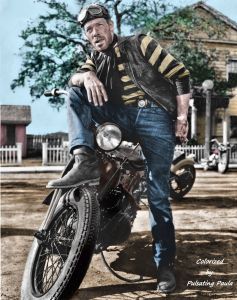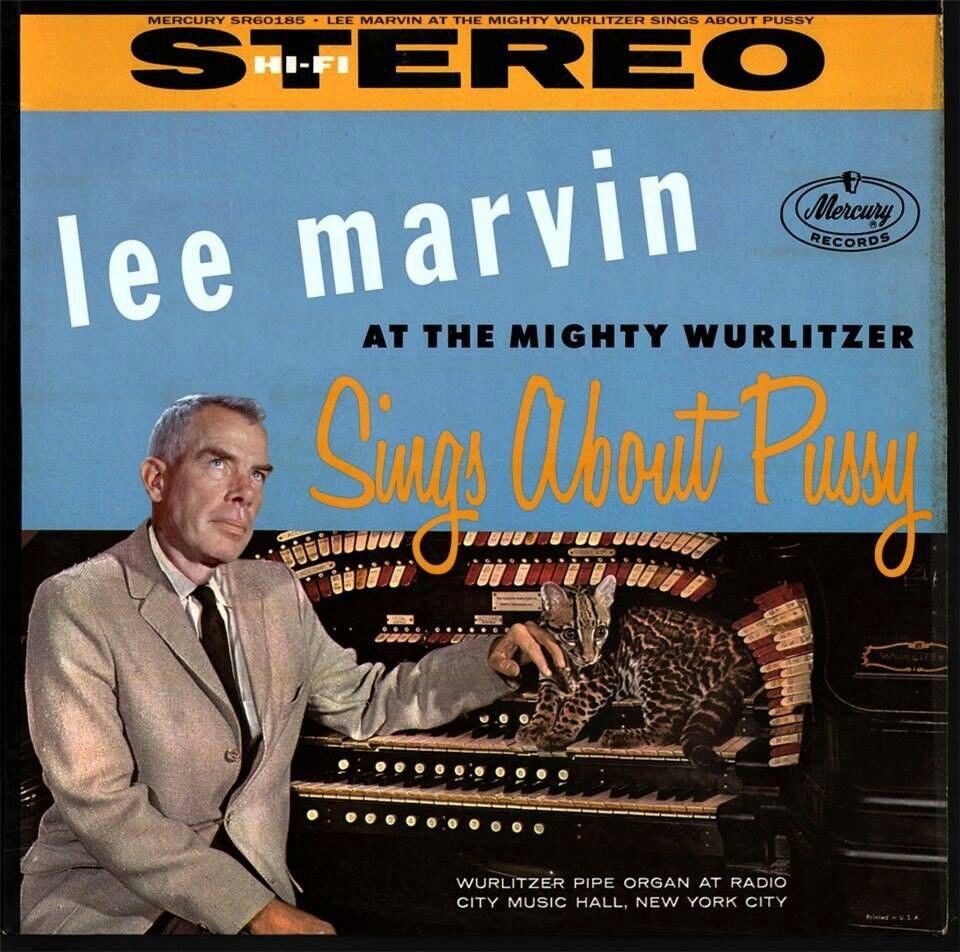
I’m not claiming classic status, or any kind of status, for Columbia’s 1950 comedy The Good Humor Man. It’s a film strictly for the kiddies, with goofy, slapstick humor and a scrubbed-clean plot and characters right outta Leave It To Beaver. But that’s my point: The film’s a visual time capsule, from literally midway through the 20th century, of the United States or, more likely, what was promoted about the U.S. and maybe even believed by that era’s inhabitants. It preserves a time when gentlemen opened doors for ladies, when ladies wore white gloves to work (which my mother once confirmed), and when boys built clubhouses and rode in kid-built kiddie cars. Only now it’s a filmic artifact, a cinematic potsherd, a celluloid hieroglyph to a lost, hazily remembered era. For cultural historians, that might be the film’s main interest. For everyone else…it’s to laugh. Or else to wonder at what film studios once thought would make audiences laugh.

And then there’s the title character—does anyone, beyond us boomers, know, I mean, really know, what a Good Humor Man is, or was? Yeah, I mean ice cream. The Good Humor brand—which still exists, per its website, though now found only in stores—was sold on suburban streets by white-uniformed men driving small trucks equipped with a freezer, which stored coated ice cream frozen on a stick. Not a bad idea—kid-friendly and you could reuse the sticks. The trucks chimed bells to announce to children (and probably dismayed parents) that ice cream was on the way. Other ice cream brands used the sounding-truck idea. An ice cream van used to cruise the streets where I live, maddeningly blaring recordings of “Pop Goes The Weasel” or “Turkey In The Straw” as it drove past, to the point where I wanted to take a potshot at it for some peace and quiet. It hasn’t been back since the lockdowns. Yeah, maybe it’s a lost way of life, but at least the street (and my sanity) is quieter.

However, The Good Humor Man movie has little to do with ice cream. It does have its titular Good Humor Man (the great Jack Carson), driving a jangling little ice cream truck from which he sells ice cream to kids, adults, and the occasional dog, but the film says zilch about the ice cream business or even the ice cream sold. This isn’t about plucky entrepreneurs plugging revolutionary frozen desserts into the American consciousness; you won’t find here a version of Tucker: The Man and His Dream with iced milk instead of cars. Naw, this is about a nice guy who, while selling ice cream, romancing his girl, and attending schoolboy clubhouse meetings, has his truck swiped by a bunch of crooks to pull off a robbery. But then guy, girl, and a horde of small boys pluckily get together to thwart the gang’s nasty purposes and, of course, save the day. Just in time for dessert.

Typical Kid Stuff, you might say—but maybe a bit more. Beneath the kiddie kavortings, I sensed something else…a point of view, even an idealized self-portrait, promoted by a post-WW2 superpower that, having just won a great conflict, pictured itself as the Nice Guy Hero, the World’s Lovable Lunk. Maybe one who’s a tad sweet and naïve, but yet can rouse itself when needed to restore truth, justice, and ice cream trucks to the American way. More was being sold here than creamsicles.

If the film itself sounds suspiciously like another movie I wrote about—I mean The Fuller Brush Man (and its sort-of sequel, The Fuller Brush Girl)—that’s because it is. Like TFBM, TGHM was produced and released by Columbia and written, in part, by Frank Tashlin, who devised its cartoon-style gags (such as Carson being stuffed into his truck’s freezer, to emerge as a human popsicle) and its blow-out comic finale in a school building, where our heroes collectively bop the baddies with desks, chairs, sports equipment, musical instruments, power tools, pies (natch), and even a donkey. Belying its dim surface sweetness, the film is antic, violent, fast-paced and -edited, with any and all jokes thrown in—Carson even drops his pants at one point—and maybe not as funny as it thinks, though it probably kept restless tots in their seats. The humor is akin to the anarchic carnage of a Warner Bros. cartoon but lacking its adult visual wit and satire. It’s more punching, flailing, kicking, running, jumping, bouncing, bonking— It’s…kid stuff.

But it’s kid stuff with a different kind of kid. As with TFBM’s salesman, The Good Humor Man’s hero is basically a small boy in adult clothing. Sure, he’s got a girl and a job but he handles both as would a child—all googly eyes and downcast glances with his sweetheart (when she kisses him, he responds by eating an ice cream bar, paper wrapper included), and fumbly-bumbly with adult males, who intimidate him (“You mean,” he exclaims when fired from his job, “I have to turn in my chimes?”). He’s most comfortable with other small boys—joining them in their Secret Council Meetings in their Secret Clubhouse, sharing with them their Secret Signals, Oaths, and Passwords. To our jaundiced eyes, such scenes with children might cause unease, but the film means them innocently—because Carson’s character is an innocent, whose ideas of life are stuck in pre-pubertal notions of heroics; attempting to protect a Damsel in Distress, our hero uses ideas he read in a Captain Marvel comic book. He’s as frozen in emotional time as one of those kid-sized popsicles he sells.


By the time this film was made, the trope of the non-threatening adult male, who loves the girl from afar, who’s best pals with the kids whose emotional level he’s at, and who can’t maneuver in an adult world that treats him like a child (and a problem one at that), was a cinematic mainstay. Actors like Danny Kaye, Bob Hope, and Jerry Lewis based their movie personas on such types—surface adults who turn into pop-eyed, panicky kids when caught with their pants down (often literally). Their films, as with TGHM, often featured crime, espionage, murder, and other oddly adult plotlines that were Golden-Age Hollywood’s idea of comic fare for children. You see their sort-of descendants today in buddy, slacker, and even superhero films, their protagonists triumphing in wildly unreal adventures with no real dangers or consequences—they’re Heroes of fabulous Romances instead of cogs in a faceless office. Such films seem coated, like a Good Humor bar, in a sweet, nostalgic glaze, as if longing to return to fantasized childhood adventures, before the tangles of work, sex, and adult burdens made life much less fun.

Yet, as with other of these man-child movies, undercutting TGHM’s kiddie heroics is an off-kilter humor edging towards the perverse. At one point, for instance, our hero finds himself inside a lady’s nightgown, with a defunct blonde on the premises, baking flour covering the floor, and chimney soot covering his face. Whatever else, it looks like it was one helluva night. Even Carson acknowledges it: “By day you sell ice cream to children,” he soliloquizes, “by night you murder beautiful women.” When the cops pick him up—he’s a bit conspicuous in that nightie —they lock him up in the women’s cell, as if not sure just what he is. That’s when you realize that, though marketed for kiddies, these films were created by real adult men and not little boys. Did they get so bored with the juvenile stuff, they slipped in the perverse gags, the wink-wink jokes, and the drag humor just to give themselves (and us non-kiddies) a laugh? Ask yourself: In how many Loony Tunes cartoons did Bugs Bunny end up in a dress? Maybe the glaze is blandly innocent, but when it comes to the filling…

What, I wonder, do such films say about the American character? Or about America itself? From today’s perspective, films like The Good Humor Man are, like Good Humor ice cream, a matter of taste. Like ancient artifacts, they probably look as strange and unknowable as Stonehenge or the Antikythera mechanism. We may still take pleasure in these movies (I suspect many do), but ultimately, I sense their humor, their culture, their point of view, their world—are as distant to us as the ruins of Troy. In a film like TGHM, with its innocent façade, and its guileless assumption of the endurance of such façades, that may be what’s most subversive about it. After all, much of what’s presented as children’s entertainment really is subversive (I’ve known people who’ve watched The Wizard of Oz when high—and you don’t have to be high to get its inside jokes). And sometimes the subversion isn’t so subvert: In his Jerry Lewis-kid-oriented film Who’s Minding The Store (which I wrote about here), Tashlin paraded a gaggle of naked ladies throughout its plot and nobody minded. Least of all the kids.
But I also have to wonder: In the 70-plus years since The Good Humor Man tinkled his chimes, so much has deeply changed in the America in which it was made—to where now something as innocuous as ice cream itself is the butt of cynical political jokes. Like ancient artifacts, TGHM is a relic that can’t be recreated. We wouldn’t want it to be; time can’t stay frozen in a freezer but needs to change, move on, grow up. Still, viewing the film, I feel a bit of nostalgia, even melancholy. Like that once-blaring ice cream van in my neighborhood, TGHM represents a lost way of life, its naïve self-illusions not to be recovered. We may not want to restore them; clear-sightedness is better. But, like the adults who crafted those cinematic kiddie antics in the first place, we’re also stuck with a bittersweet awareness—of now knowing a little too much about the filling underneath.

Bonus Clip: Courtesy of CaptainBijou.com, here’s the trailer for The Good Humor Man: “Yum, Yum…What Fun!”
You can watch a complete print of The Good Humor Man (subtitled) here on YouTube, while available. In Vanilla, Butter Pecan, Chocolate Malt, Date and Nut, and even Honeydew.




